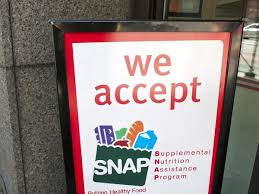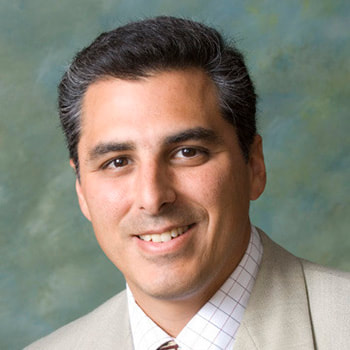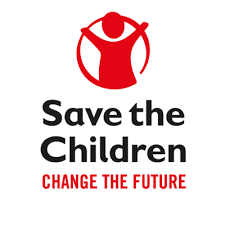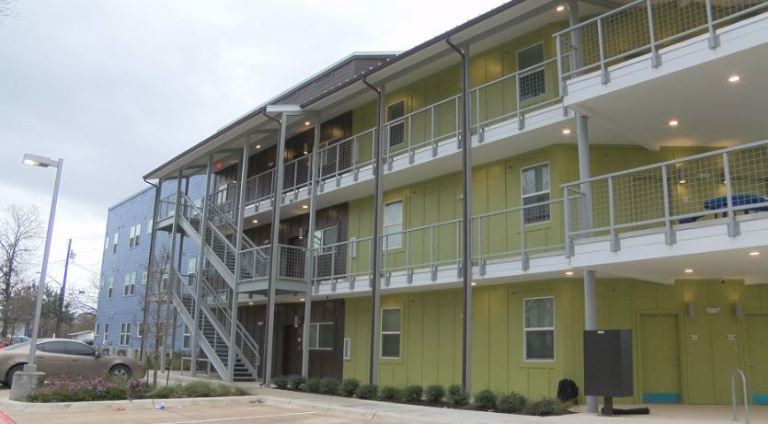 Food stamps — formally known as the Supplemental Nutrition Assistance Program, or SNAP — support young and old, healthy and disabled, the working and the unemployed, making it the closest thing the United States has to a guaranteed income. Though administered by states, the benefits are paid by the federal government, with no spending cap, and the program has largely avoided the delays that have plagued unemployment insurance. After long pushing to reduce SNAP usage, claiming it promotes dependency and waste, the Trump administration eased administrative rules during the pandemic to speed enrollment. Two Republican-led states, Florida and Georgia, have expanded caseloads the most, and state officials from both parties have called the program an essential antipoverty tool. About 43 million people — roughly one of every eight Americans — now receive SNAP. More than six million people enrolled in food stamps in the first three months of the coronavirus pandemic, an unprecedented expansion that is likely to continue as more jobless people deplete their savings and billions in unemployment aid expires this month.  Thirty states have experienced double-digit growth, and usage has risen in all 133 counties in the three West Coast states. About 50,000 people have joined the rolls in the county that includes Atlanta, more than 100,000 in the county that includes Detroit and more than 200,000 in those that include Miami and Los Angeles. No state has seen more growth than Florida, which has added nearly a million residents to the rolls. Among the new centers of SNAP usage is Orlando, where a region known for flights of fantasy became a center of nutritional need. With amusement parks closed and tourism vanishing, caseloads in Orange and Osceola Counties rose more than 50 percent, adding nearly 125,000 people. From February to May, the program grew by 17 percent, about three times faster than in any previous three months, according to state data collected by The New York Times. Its rapid expansion is a testament to both the hardship imposed by the pandemic and the importance of a program that until recently drew conservative attack. The rolls have surged across Appalachian hamlets, urban cores like Miami and Detroit, and white-picket-fence suburbs outside Atlanta and Houston, rising faster in rich counties than in poor ones, as the downturn caused by the virus claimed the restaurant, cleaning and gig economy jobs that support the affluent. Despite SNAP’s expansion, surveys continue to show high rates of “food insecurity” — reduced quality of food or uncertain access — as well as outright hunger. A new survey by the Urban Institute found 17.7 percent of adults report food insecurity, much higher than pre-crisis levels. The rate for Black people and Latinos was about twice as high as for whites.  As Congress returns this week, Democrats want to increase the maximum benefit by 15 percent, noting that food prices have risen to the highest level in nearly a half-century. Aside from SNAP, there is a growing need for nonprofit services during and after the pandemic that will outpace the capacity and resources of organizations and according to a recent report, the possibility that 10% to 40% of nonprofit groups will be forced to close or merge with other ones, and there will be much less government money to help pay for the services organizations deliver. The Trump administration says that the next coronavirus aid package, which is expected to top $1 trillion, should focus on 'kids and jobs and vaccines.' Negotiations between congressional Republicans and the White House hit snags over the weekend and talks between the GOP and Democrats have been nearly non-existent. Treasury Secretary Steve Mnuchin said that Republicans are committed to passing legislation by the end of the month to protect unemployed Americans who have been receiving enhanced benefits, though he suggested it won't be as much as the current level of $600 extra in unemployment insurance per week. "We're going to make sure that we don't pay people more money to stay home than go to work. We want to make sure that people who can go to work safely can do," he said. "We'll have tax credits that incentivize businesses to bring people back to work. We'll have tax credits for PPE for safe work environments, and we're gonna have big incentives, money to the states for education for schools that can open safely and and do education." Republicans also want to offer liability protections for schools, colleges, charities, businesses and frontline health care workers and employers who follow public health guidelines. "We don’t need an epidemic of lawsuits on the heels of a pandemic," said McConnell. Some Senate Republicans are pushing back against a White House attempt to block billions of dollars for coronavirus testing and tracing contacts of individuals infected with the coronavirus, two Republican sources told NBC News on Sunday. News of the White House push to block the funding was first reported by The Washington Post. Congress doesn’t have much time to negotiate and pass the legislation — lawmakers have only a few weeks left in Washington before their annual summer recess in August which will be focused on their own interests of campaigning, collecting campaign contributions and the two parties’ conventions in advance of the November election with no mention by either party of any extended session to address the resurgence of the pandemic. For more, click here.
0 Comments
In 2014, the mobile camera company GoPro went public, and Nicholas Woodman, the company’s founder and chief executive, was suddenly worth about $3 billion. Later that year, Woodman and his wife, Jill, announced they were establishing a foundation with about $500 million worth of GoPro stock. The foundation, however, was a donor-advised fund. A 2018 New York Times story noted that, four years later, Woodman’s foundation had no website and hadn’t appeared to have funded any significant charitable operations. Google co-founder Larry Page’s use of DAFs has also raised concerns. Last December, an analysis by Recode found Page had stocked more than $400 million in DAFs from 2015 to 2017. In December 2017, Google co-founder Larry Page made what appeared to be generous donations to two charities. To one charity, according to tax records filed by Page’s foundation, he gave $100 million in cash and stock. To the other, records show, Page gave $80 million in cash. Two and a half years later, it’s unclear if any of that money funded any charitable works, or if it’s all still sitting in accounts mostly controlled by Page, collecting interest and earning investment income. That’s because the organizations on the receiving end of Page’s donations were not working charities — such as the American Red Cross or the United Way — but donor-advised funds, a controversial and booming form of philanthropy attracting increasing scrutiny and criticism amid the coronavirus pandemic, as charities face a historic crisis. Page did not reply to a request for comment for this story. Spokesmen at the organizations that received his donations in 2017 — Schwab Charitable and the National Philanthropic Trust — declined to comment, citing privacy rules. Known in the industry as DAFs (rhymes with calves) — and criticized by some insiders as “zombie philanthropy” — the money and assets in donor-advised funds are intended to go to charity some day, but there are no payout requirements, and money can sit in a donor-advised fund for decades. DAFs are the fastest growing form of charitable spending in America, with more than $120 billion in DAF accounts across the country in 2018, according to the most recent industry estimates, up from $45 billion just six years earlier. And while some executives who oversee these funds say critics exaggerate potential abuses, the coronavirus pandemic has prompted a few wealthy DAF users to express rising concern about the way these funds are managed. “Charities are slammed for work, needing to do more than ever before … and yet this $120 billion is still sitting there … It’s kind of crazy,” said David Risher, a former Microsoft and Amazon executive who — with his wife, Jennifer — launched the #HalfMyDaf campaign in May to try to inspire donors to pay out at least half the money in these accounts to charities this year. “The money is sitting there because people often have a plan for their philanthropy,” said Jennifer Risher, a former manager at Microsoft and author. “Well, the world is not on plan right now. Now is the moment.” The Rishers’ echoed concerns raised by Kat Taylor — philanthropist, banking executive and wife to hedge fund manager and former presidential candidate Tom Steyer — who is a vocal critic of the DAF system and has supported draft legislation in California this year that would require more oversight and impose transparency obligations on these funds. “They were created without, I think, as much oversight and foresight as we should have given them,” Taylor said. “These are the piggy banks of charity. We should be breaking our piggy banks right now.” The rise of what some critics denounce as “a perversion of the tax code” traces its roots to 1969, when Congress rewrote the tax code to favor public charities over private foundations, imposing more taxes on private foundations and requiring more public information on their finances. To Norman Sugarman, a former IRS attorney in Cleveland, this created both concern and opportunity. Sugarman represented community foundations fearful the new law would scare off donors. “For him, it was important that, no questions asked, these [community foundations] were public charities,” said Lila Corwin Berman, a history professor at Temple University who has written about Sugarman’s role in the popularization of DAFs. “He believed most social problems could be better solved by charity than government, and that individuals should have more control over what their wealth could do for society.” Sometimes, however, the money is just moving from one donor-advised fund to another donor-advised fund. A 2017 analysis by the Economist magazine of data from three of the largest donor-advised funds found two of the three largest recipients of their charitable spending were other donor-advised funds. (Account holders can move money and assets from one fund to another in search of better fees.) “You start to kind of wonder … where is all the money?” David Risher said. “And then you realize that you have these funds that have more than $120 billion parked in them … and when you look at a system like this, you start to realize that there are financial incentives at some organizations, where the status quo is working pretty well for them.” Original story by Will Hobson, Washington Post. Click here for more.
The $2 trillion stimulus bill expands the charitable deduction to all taxpayers for a year, makes nonprofits eligible for federal loans that could be largely forgiven, and boosts tax incentives for corporate giving, according to nonprofit analysts. Currently, only people who itemize their taxes can claim charitable deductions. The stimulus bill will allow nonitemizers to deduct up to $300 in cash giving for the 2020 tax year, according to an analysis of the legislation by the National Council of Nonprofits. Donations to donor-advised-fund accounts would not qualify for the nonitemizer deduction, according to Dean Zerbe, national managing director at AlliantGroup and a former top tax aide for the Senate Finance Committee. Nonprofits have long sought a "universal deduction," especially since the tax law of 2017 roughly doubled the standard deduction and sharply reduced the number of people who itemize their taxes. The Senate voted unanimously Wednesday to pass the bill. The House is expected to approve it today, and President Trump has said he will sign it. For those who itemize, the bill lifts the cap on annual giving from 60 percent of adjusted gross income to 100 percent. For corporate charitable giving, the bill raises the annual limit from 10 percent to 25 percent of taxable income. The cap on deductibility of food donations from corporations would increase to 25 percent of taxable income, up from the current 15 percent cap. More Help for Nonprofits
Other provisions of the bill affecting charities, according to the National Council of Nonprofits and other sources:
Although nonprofit advocates are seeking more federal help for charities than the bill provides, including a $60 billion aid package specifically for nonprofits, there was widespread approval of the legislation with hopes for more to come later, including expanding the universal deduction. "There is much to celebrate in this deal, but still a lot of advocacy needed," said Tim Delaney, president and CEO of the National Council of Nonprofits, in an emailed statement. "Additional funding resources will be absolutely critical in the months to come," wrote Charlotte Haberaecker, CEO of Lutheran Services in America. Independent Sector, a Washington-based nonprofit membership organization. By Dan Parks, Chronicle of Philanthropy. After the stock market had its worst day since the crash that touched off the 2008 financial crisis, experts urged nonprofits to prepare their finances for the possibility that the economy would face a long-term setback from the coronavirus pandemic. Nobody knows whether the economy will face as deep a struggle as it did in 2008, a year when charitable giving plunged 5.7 percent, according to "Giving USA," the steepest decline since it began its survey in 1956. Fundraising consultants and nonprofit experts urged charities to start planning for a prolonged recession — but some also cautioned that it’s too soon to make any drastic moves, like cutting staff, because it’s not clear yet whether a recession is imminent. Dan Thain, chief fundraising strategist and creative director at Blue State, said nonprofits should stick with their current fundraising strategies despite the turmoil upending financial markets. "There are so many unknown unknowns at the moment," Thain said. "My advice would be to push on, but pull back if you’re not seeing the response rates that you would typically see." Meanwhile, nonprofits should be frugal and try to pad their reserves where possible, he said.
"There is a huge threat to the economy right now, which could have a decisive impact on what fundraising looks like in the coming months, if not years," Thain said. Using Reserve Funds Jerry Hauser, CEO, of the Management Center, said nonprofits should look at the current market turmoil "as a one-time or short-lived event" and said nonprofits should avoid laying off staff or making other major structural changes under the assumption that a recession is imminent. "It’s too soon to say we’re in for a long, rough road, and it’s too risky to erode your ability to deliver on needed programs," Hauser said. And while Thain said nonprofits should look to pad their reserves, Hauser said now may be the right time to dip into them, for those nonprofits fortunate enough to have available funds in the bank. He suggested that while nonprofits may take a short-term fundraising hit, the current market turmoil could pass relatively quickly. "This is a good time for organizations to consider using their reserves, something I’m usually very cautious about," Hauser said. Sandi Clement McKinley, vice president for advisory services for the Nonprofit Finance Fund, agreed that the coming weeks and months may be a good time for nonprofits to consider dipping into reserves, if available, while making a commitment to restore those reserves later. That’s a conversation that should include the board of your nonprofit, she said. She also urged nonprofits to focus on their core missions at a time like this and to shelve plans to expand into areas where they don’t currently have expertise or experience. "Remember why you are here and who you are serving," McKinley said. McKinley warned that the economy could suffer for an extended period even after the coronavirus threat wanes. "Nonprofits and their funders should be considering the big picture of weathering an economic recession and taking action to make sure nonprofits survive and can ably serve their communities for an extended time," she said. Kathryn Kennedy a partner at Cerity Partners, a financial advisory firm in Chicago, agreed that many donors are taking a wait-and-see approach to the impact of the coronavirus. "People are trying to understand it and understand the government and big foundation responses," Kennedy said. Kennedy said that despite the ongoing turmoil in the stock market, she expects charitable giving from wealthy donors to hold up: "These are people who have a dedicated commitment to being charitable and they will continue to give." An embattled nonprofit with close ties to top state lawmakers, the NYS Association of Black & Puerto Rican Legislators, in 2017 hired a prominent Albany lobbyist to boost its fundraising capabilities, according to newly released tax records. The hiring of Patrick B. Jenkins and Associates paid off, as the nonprofit, which is the focus of an investigation by the state attorney general’s office, raised substantially more revenue and gave out almost as much scholarship money to needy youth as it had for the three previous years combined. Even before Jenkins’ hiring, questions had been raised about the lawmakers’ charity receiving significant funding from interests with business before the state Legislature. Jenkins, meanwhile, in the past has raised significant campaign dollars for lawmakers by soliciting donations from its own roster of influential clients, then lobbying some of those same state lawmakers for the clients. The filings also reveal several inconsistencies in the charity’s previous filings submitted to Attorney General Letitia James’ office, and raises more questions about the charity’s spending for that year and those prior, including how much money it was giving to students in need. The group’s new filing, which covers the 2017-18 tax year, is a focus of the state attorney general’s probe, according to a source with knowledge of the matter. The tax documents apparently were posted to the attorney general’s website within the last two days. A spokeswoman for the attorney general’s office declined to comment, citing its ongoing investigation. Assemblywoman Latrice Walker and Assemblyman Gary Pretlow, the nonprofit’s chairwoman and treasurer, respectively, did not return calls for comment. A spokesman for the association, Hank Sheinkopf, said Walker restructured the organization when she took over as chair in 2017. “A new accounting and auditing team has been hired and the attempt is to ensure that everything is being complied with and all filings are being brought up to date,” he said. Click here for more info.
Donors are pouring money and goods into Australian bushfire relief efforts, as organizations struggle to direct the contributions to where they can do the most good. Charity directors say some donors likely have only a vague sense of where their money is going. A Facebook fundraising event for a rural fire service that had a goal of $20,000 took in $34 million, making it the largest one ever on the platform. A fire commissioner said the organization will likely spread around the windfall to fire victims or other fire services. Meanwhile, the Australian Red Cross has raised about $67 million in individual contributions since July 1, compared with $7.5 million during a drought appeal last year. And a wildlife rescue group in New South Wales has raised $9.6 million, likely siphoning off donations to other regions as donors may have thought they were contributing generally to help animals caught in the inferno. Australian philanthropist Andrew Forrest is touring the U.S. seeking support for efforts to prevent and mitigate fire disasters worldwide. He and his wife, Nicola, have pledged $48 million through their Minderoo Foundation in response to the bushfires raging in Australia. The foundation has set up a fire fund to accept donations and hopes to raise more than $344 million for fire-resilience efforts.
 LifeWorks continues their fight to end youth homelessness in Austin this year with a brand-new affordable housing facility for young people and families. The Works II is a 29-unit building in east Austin, adjacent to their existing facility. The grand opening is January 21. There are two bedroom, one bedroom and efficiency units to fit the needs of each individual client. Their stay can range from one to two years, or even longer if that’s what they need to get on their feet. “When we have youth coming right off the street and into an apartment, this could be their very first home,” Hanckel said. “To see our clients and youth walk in and burst out into these big smiles and their eyes well up with tears, it is such a heartwarming moment.” With each unit, a step closer to their goal. In November 2019, residents began moving in to the Works II, and the building is currently at 72% capacity. “That may not seem like a lot. It may seem like a very small number given the work that we have to do,” said LifeWorks Director of Communications and Marketing Julianne Hanckel. “But as we continue to move forward, and we continue to spread awareness, we really want to create that feeling that this is achievable.” The goal they’re hoping to achieve: becoming the first major city in the U.S. to end youth homelessness by December 2020. They base their success off the government definition for “functional zero.” That means the number of young people entering homelessness is equal to the number of young people who are being housed. Hanckel said right now, LifeWorks has identified 450 youth, aged 18-24, in need and he said they are “on track,” but there’s an exact dollar amount they need to achieve “functional zero”: $4.9 million. “We’ve spent years trying to pinpoint the amount needed financially to scale our programs, hire the staff and address the numbers of who are in need of the most immediate services,” Hanckel said. The money will be used for not only housing and shelter, but programs to make homelessness rare, brief, and non-recurring for these youth. “That means we address their homelessness and then exit them from it in 30-45 days,” Hanckel said. LifeWorks will also partner with other groups to get young people jobs, a GED, or counseling, enabling them to keep a roof over their head. “This is a solvable problem,” she said. Click here, for more info on Lifeworks
 The Board of Directors of the Food Research & Action Center (FRAC) has selected Luis Guardia to serve as president of the anti-hunger organization. Guardia, who most recently served as the Chief Business and Financial Services Officer at Global Impact and Chief Operating Officer at the ONE Campaign, will bring 30 years of experience in nonprofit management and a wealth of expertise in advocacy, health care, international development, philanthropy, and public media to FRAC when he assumes his new position on March 1, 2020. He will succeed Jim Weill, who served as FRAC’s president for the last 22 years. “We are very pleased that Luis is coming on board as FRAC’s president. For 50 years, FRAC has made great strides in expanding the reach of proven solutions to ending hunger in America,” said FRAC Board Chair Judith Whittlesey. “Luis’ vision, energy, and extensive expertise will prove invaluable in building on these accomplishments and ensuring millions more people across the country have access to the nutrition they need.” Guardia said, “I am thrilled and privileged by the opportunity to build on FRAC’s impressive record of achievement. I have long admired FRAC’s mission and look forward to leading the fight against hunger and creating greater social justice for all in partnership with the Board and the incredibly talented staff at FRAC.” Whittlesey offered deep gratitude to Jim Weill. “Jim’s tenure as FRAC’s president has been distinguished by a multitude of accomplishments. Jim has been a stalwart champion of the federal nutrition programs and an exceptional leader who broadened and strengthened FRAC’s network of state and local anti-hunger advocates, including the launch of D.C. Hunger Solutions and Maryland Hunger Solutions. Jim’s commitment to FRAC’s mission, its staff, and the people it serves is well known. We wish Jim and his family all the best as he begins retirement.” Prior to his roles with Global Impact and the ONE Campaign, Guardia held a variety of management roles with the International Center for Research on Women, Corporation for Public Broadcasting, and NPR. Guardia also serves on the boards of PAI, Kalanidhi Dance Company, and the Fundraising, Finance, and External Audit Committee of ActionAid International. Guardia previously served on the boards of the Society for International Development, Mary’s Center, and the PBS Technology Committee. Guardia received his Master of Business Administration from University of California, Los Angeles, Master of Science in Systems Engineering from The George Washington University, and a Bachelor of Arts in economics and art history from the University of Virginia.  Since 2017, MarTech has been recording, analyzing, and tracking every ad released in the UK and US in the not-for-profit sector. They predict both short term sales spikes and long-term brand building based on the performance of the ad. Because of their work with SURF Survivors Fund in Rwanda, this is an area that has interested them greatly since theystarted, but it’s been disappointing to see that non-profit advertising is consistently one of the worst performers across sectors for long term growth. But why is that? Is it a budgetary issue? Are creatives too often using juniors for the creative? The issue lies with the historic use of shocking and upsetting imagery to break through consumer apathy in order to get that donation. And if you look at the short-term sales spikes for NFP ads that becomes much clearer. This year’s Save the Children Pneumonia Appeal ad is a good example of this. It is a touching and powerful ad that provides an insight into the pneumonia crisis in Kenya. It scored significantly for a short terms sales spike and will surely have resulted in an influx of donations for the campaign and it will most probably be considered an effective ad for the charity. Similarly, a Barnardo’s advert from this year, a tragic story of online grooming also scored significant short terms sales spike. However, in both cases, each ad scored only 1 star for long term effectiveness. There is certainly an argument that in both cases the ads are created to produce a surge in donations, and this seems to be exactly what they did do. However, is there a way to increase donations and also accelerate long-term brand building that will potentially provide continuing positive impact for a charity? On the other end of the scale, the two best-performing charity ads in the UK in terms of brand growth over the past two years, are Cancer Research Angela’s Results ad from this year and Battersea Dogs and Cats Home, Animal Journalist ad. Both of these ads scored 5+ stars for long term brand building, and not insignificant short-term sales spikes. Animal Journalists, part of a longer campaign from the charity from 2018, is humorous and there is not a single shot of a distressed animal, instead, we are treated to a more playful and fun framing of dogs and cats. Even the short term sales spike is reasonable, 22% lower than the Save the Children pneumonia appeal ad, but it still performs better than more than half of all NFP ads for this metric. The Cancer Research ad, Angela’s Results focuses on someone getting the news that their cancer is in remission, it’s a short bomb of extreme relief and happiness. And for short term sales spike it was more effective than 90% of NFP ads in the last two years, and only 8% less effective for this metric than the Save the Children ad. Emotional advertising campaigns are generally more profitable for long term growth. This data shows that how those emotions are applied to creative will have different results for an organization. What’s important to understand for charities is that it is possible to get that short-term donation spike, but at the same time ensure that you positively build your brand for the future.  Cedars-Sinai announced Dec. 10 it has received a $20 million gift from the co-founder of digital navigation company Garmin to create an autoimmune disease institute for the research and treatment of rheumatologic diseases. The gift comes from the family foundation of Min Kao, a Taiwanese American electrical engineer-turned-businessman and philanthropist. The funds will also establish a program within the institute bearing the Kao name for research, training and education for people with scleroderma, a disease that causes the hardening and tightening of the skin and other connective tissues. Both the institute and program will be housed at Cedars-Sinai’s Beverly Grove hospital and headquarters. Kao remains executive chairman of Garmin Ltd., a Schaffhausen, Switzerland-based company that makes devices that use global positioning system technology. Forbes currently estimates Kao and his family's net worth to be $4.1 billion. |
BLOGArchives
January 2025
Categories
All
|






